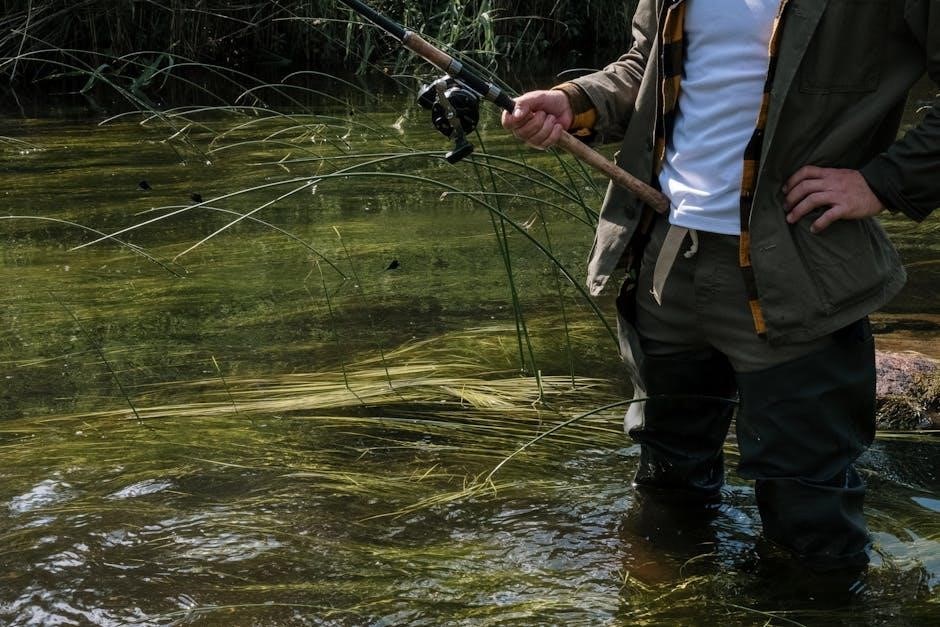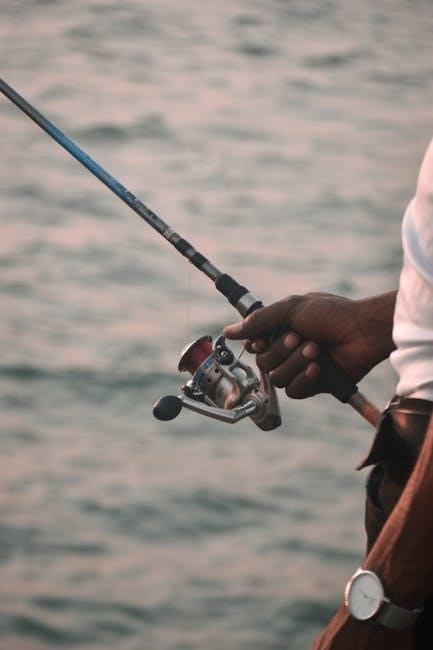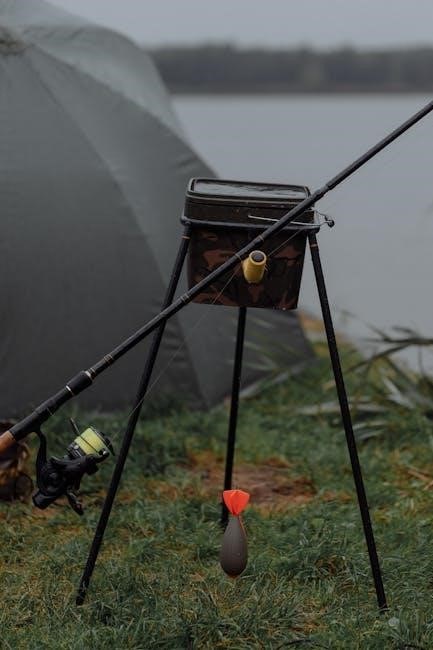Fishing reel size guide provides essential information for anglers to choose the right reel, with a detailed explanation of reel sizes and their applications in various fishing situations and techniques available online always.
Understanding the Importance of Reel Size
The importance of reel size lies in its ability to hold the right amount of line and provide the necessary drag system to handle the target species. A reel that is too small may not have enough line capacity, while a reel that is too large may be cumbersome and difficult to handle. Understanding the importance of reel size is crucial for anglers to make informed decisions when selecting a reel for their fishing needs. The reel size guide provides a framework for anglers to choose the right reel based on the type of fishing they will be doing, the species they are targeting, and the line strength they will be using. By considering these factors, anglers can select a reel that is well-suited to their needs and increase their chances of success on the water. This knowledge is essential for anglers of all levels, from beginners to experienced professionals.

Fishing Reel Size Chart
Reel size charts match gear with fishing situations and techniques using a detailed guide always online for reference purposes only every time.
Reel Size Ranges and Line Strengths
Reel size ranges are typically categorized based on the type of fishing and the strength of the line being used. The size range of a reel can affect its performance and durability. For example, smaller reels are often used for lightweight fishing with thinner lines, while larger reels are used for heavier fishing with thicker lines. The line strength is also an important factor to consider when choosing a reel size. A reel that is too small for the line strength being used can result in poor performance and increased wear and tear on the reel. On the other hand, a reel that is too large for the line strength being used can result in a lack of sensitivity and control. By understanding the different reel size ranges and line strengths, anglers can make informed decisions when choosing the right reel for their specific fishing needs. Reel size ranges and line strengths are closely related and must be considered together.
Types of Fishing Reels and Their Sizes
Spinning, baitcasting, and trolling reels come in various sizes, each suited for specific fishing techniques and species, with unique features and applications always considered online.
Spinning Reel Size Chart and Applications
A spinning reel size chart is a useful tool for anglers to determine the right reel size for their fishing needs. The chart typically ranges from 1000 to 8000, with smaller numbers indicating smaller reels. Each size is linked to line strengths and fishing types, making it easier for anglers to choose the right reel. For example, smaller reels are ideal for lightweight rods and targeting small species, while larger reels are better suited for heavier rods and larger species. The spinning reel size chart also takes into account the type of fishing, such as freshwater or saltwater, and the type of fish being targeted. By using a spinning reel size chart, anglers can ensure they have the right gear for a successful fishing trip. With the right reel size, anglers can improve their casting performance and increase their chances of catching fish. Additionally, the chart helps anglers to optimize their reel performance and manage their line effectively. Overall, a spinning reel size chart is an essential resource for any angler looking to improve their fishing skills and catch more fish. Reel size is a critical factor in fishing success.

Small Sized Spinning Reels and Their Uses
Small spinning reels are ideal for ultralight fishing and targeting small species with lightweight rods and lines always.
Medium and Large Sized Spinning Reels
Medium and large sized spinning reels are designed for heavier fishing applications, providing increased line capacity and drag power. These reels are suitable for targeting larger species, such as bass, pike, and catfish, and are often used with medium to heavy action rods. The larger spool size allows for longer casts and greater line retrieval, making them ideal for surf fishing, pier fishing, and trolling. Medium sized spinning reels, typically in the 4000 to 6000 size range, are versatile and can be used for a variety of fishing techniques, including bottom fishing, jigging, and live baiting. Large sized spinning reels, typically in the 8000 to 10000 size range, are designed for extreme fishing applications, such as deep sea fishing, shark fishing, and trolling for large game fish. They offer exceptional drag power and line capacity, making them capable of handling even the largest and most powerful fish. Overall, medium and large sized spinning reels are essential for serious anglers who require a reel that can handle heavy fishing conditions. They offer a range of features and benefits that make them an excellent choice for a variety of fishing applications.

Fishing Techniques and Reel Size Selection
Anglers must consider fishing techniques when selecting reel size for optimal performance always using online resources.
Matching Reel Size with Fishing Situations
Matching reel size with fishing situations is crucial for a successful fishing experience. The type of fishing, the species being targeted, and the fishing environment all play a role in determining the appropriate reel size. For example, in freshwater fishing, a smaller reel size may be sufficient, while in saltwater fishing, a larger reel size is often required. The reel size should also be matched with the type of fishing line being used, as well as the weight and type of lure or bait. By considering these factors, anglers can choose a reel size that is well-suited to their specific fishing situation, increasing their chances of catching fish and enjoying a productive day on the water. Online resources and fishing guides can provide valuable information to help anglers make informed decisions about reel size and fishing situations. Proper matching of reel size and fishing situation can make all the difference.

Reel Size and Line Management Systems
Reel size affects line management systems, including casting performance and line retrieval, with larger reels often featuring more advanced systems, optimizing overall fishing experience and angler success rates always online.
Optimizing Reel Performance with the Right Size
To optimize reel performance, selecting the right size is crucial, as it directly impacts the overall fishing experience. The correct reel size ensures a balanced setup, allowing for smooth casting and retrieval. A reel that is too small may struggle with larger fish, while a reel that is too large can be cumbersome and affect casting accuracy. By choosing a reel size that matches the fishing technique and target species, anglers can maximize their chances of success. The right reel size also helps to reduce line twist and tangles, making it easier to manage the line and focus on fishing. Furthermore, a properly sized reel enables anglers to apply the right amount of pressure and control, leading to a more enjoyable and productive fishing experience. With the right reel size, anglers can optimize their reel’s performance and increase their overall satisfaction with their fishing gear. This is essential for anglers of all levels, from beginners to experienced professionals.
